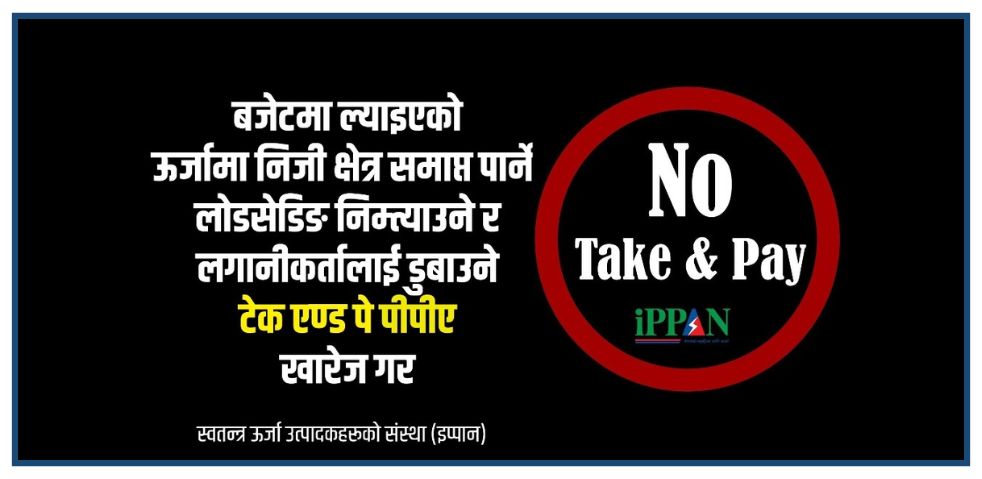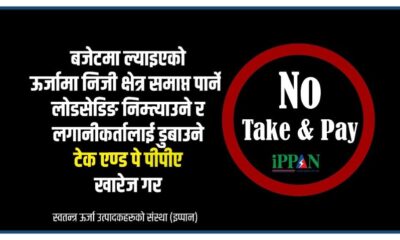Blogs
List of Merchant Bankers in Nepal [Updated 2024]

- Financial Advice: Helping companies with mergers, acquisitions, and economic restructuring.
- Raising Capital: Assisting businesses in raising money by issuing shares or bonds.
- Investment Management: Managing investments for clients to ensure they get good returns.
- Direct Investment: Investing in companies and sometimes taking part in their management to help them grow.
- Large Loans: Arranging big loans that require the involvement of multiple lenders.
Unlike regular banks, merchant banks do not provide everyday banking services like accepting deposits or giving out personal loans. Merchant bankers specialize in helping companies and wealthy individuals with complex financial needs.
Merchant banks are regulated by Nepal Rastra Bank (NRB), which oversees their operations, ensures compliance with financial laws, and manages monetary policies that impact their activities. NRB’s role helps maintain financial stability, enabling merchant banks to operate efficiently and support economic growth.
List of Merchant Bankers in Nepal [Updated 2024]
Here are the details for the 29 merchant bankers in Nepal, including their contact information, email addresses, physical addresses, and websites:
| Name | Contact | Address | Website | |
|---|---|---|---|---|
| Aakash Capital Limited | 01-5111145 | info@aakashcapital.com.np | Thapathali, Kathmandu | Visit Site |
| Arks Capital Advisors Limited | 01-5911676 | info@arkscapitaladvisors.com.np | Central Business Park, Thapathali, Kathmandu | Visit Site |
| Asian Capital Limited | 01-4418664, 01-4416504 | info@asiancapital.com.np | Maitidevi complex, Maitidevi, Kathmandu-32 | Visit Site |
| Citizen Investment Trust | 01-4785319, 01-4785321 | cit_cmkt@nlk.org.np | New Baneshwor, Kathmandu | Visit Site |
| Citizens Capital Limited | 01-4417723, 4417457, 4418526, 4421235 | info@citizenscapital.com.np | Batule Ghar, Dillibazar 33, Kathmandu, Bagmati, Nepal | Visit Site |
| Elite Merchant Capital Limited | 014425190, 014425189 | elitecapitalnepal@gmail.com | 2nd Floor, Metro Park Building, Lazimpat-2, Kathmandu, Nepal | Visit Site |
| Garima Capital Limited | 01-4429149, 4429150 | info@kclastute.com | Sundar Bhawan, Hattisar, Kathmandu, Nepal | Visit Site |
| Global IME Capital Limited | 01-4226441, 4261178, 4222460 | info@gicl.com.np | Laxman Babu Bhawan, Naxal, Kathmandu, Nepal | Visit Site |
| Himalayan Capital Ltd | 01-4259345 | info@himalayancapital.com | Thamel, Kathmandu | Visit Site |
| Jyoti Capital Ltd | 015916548, 015916549 | jbblcapital@gmail.com | Kamalpokhari, Kathmandu | Visit Site |
| Kumari Capital Limited | 01-415173, 01-5970082 | kumaricapital@kumaribank.com | Nagpokhari, Kathmandu | Visit Site |
| Laxmi Sunrise Capital Limited | 01-4780222, 4781582 | info@laxmicapital.com.np | New Baneswor, Nepal | Visit Site |
| Machhapuchhre Capital Ltd. | 01-4266325 | mcl@machcapital.com.np | Sundhara, Katmandu | Visit Site |
| Market Pundit Capital & Merchant Banking Ltd. | 015455991 | info@marketpunditcapital.com.np | Jawlakhel-13, Lalitpur | Visit Site |
| Muktinath Capital Limited | 01-5111172, 5111174, 5111159 | info@muktinathcapital.com | Hattishar Sadak, Kamaladi, Kathmandu | Visit Site |
| Nabil Investment Bank Limited | 01-4421180, 4411604, 4411733 | info@nabilinvest.com.np | 3rd Floor, Central Plaza Narayanchaur, Naxal, Kathmandu | Visit Site |
| Nepal Life Capital Limited | 01-4430746, 4415856 | info@nmbl.com.np | Kathmandu -30, Gurju Margh, Dillibazar | Visit Site |
| Nepal SBI Merchant Banking Limited | 01-4414382, 4412743 | admin@nsmbl.com.np | Hattishar, Kathmandu | Visit Site |
| NIC ASIA Capital Limited | 01-5705994, 5705664, 5706318, 5705337 | info@nicasiacapital.com | 3rd Floor, Siddhartha Insurance Complex Babarmahal, Kathmandu | Visit Site |
| NIMB ACE Capital Limited | 01-4005157, 4425280, 4419421, 4005068 | info@niblcapital.com | Lazimpat Kathmandu, Nepal | Visit Site |
| NMB CAPITAL LIMITED | 01-4240134, 4437963 | info@nmbcl.com.np | Baluwatar-4, Kathmandu, Nepal | Visit Site |
| Prabhu Capital Limited | 01-4222939, 4221946, 4221952, 4222987, 4223539 | info@prabhucapital.com | Kamaladi, Kathmandu, Nepal | Visit Site |
| Provident Merchant Banking Limited | 01-5147097, 4993450 | info@provident.com.np | Shankhamul, Kathmandu | Visit Site |
| RBB Merchant Banking Limited | 01-4243265, 4240932, 4240933 | rbbmbl@rbbmbl.com.np | Teku, Kathmandu, Nepal | Visit Site |
| Reliable Investment & Merchant Capital Limited | 01-5919410 | info@reliablecapital.com.np | Bhakta Marga, Baluwatar, Kathmandu | Visit Site |
| Sampanna Capital and Advisory Nepal Ltd. | 01-4782847 | info@scan.com | Krishna Galli, Pulchowk, Lalitpur | Visit Site |
| Sanima Capital Limited | 01-4536375 | sanimacapital@sanimabank.com | Narayanchaur, Naxal, Kathmandu, Nepal | Visit Site |
| Siddhartha Capital Limited | 01-4420924, 4422606, 4420925, 4421279, 4420598 | scl@siddharthacapital.com | Narayanchaur, Naxal Kathmandu, Nepal | Visit Site |
| Sunlife Capital Ltd. | 01-4100648 | info@sunlifecapital.com.np | Putalisadak, Newplaza, Kathmandu | Visit Site |
You may also like:
Blogs
Private Power Producers Protest ‘Take and Pay’ Provision in Budget

Private energy entrepreneurs in Nepal have taken to social media, protesting the government’s decision to introduce the ‘Take and Pay’ (Liu Ra Tir) system for electricity purchase agreements (PPA) in the new fiscal year budget.
Under this system, the government would only pay for the electricity it uses, instead of paying for the total electricity generated by hydropower projects. Entrepreneurs argue this move could severely hurt the private sector, discourage investment, and push the country back toward power shortages.
Online Campaign Targets Top Officials
Energy producers are now directly appealing to key government figures. They have publicly tagged Prime Minister Pushpa Kamal Dahal, Finance Minister Barshaman Pun, Energy Minister Shakti Bahadur Basnet, and NEA Executive Director Kulman Ghising on social media, urging them to withdraw the Take and Pay provision.
This digital campaign comes just days after developers handed over a memorandum to the Prime Minister and bombarded top officials with hundreds of SMS messages requesting the same.
Why Are Entrepreneurs Worried?
Entrepreneurs claim that this decision will:
- Weaken the private sector’s role in the energy industry
- Risk the return of load-shedding (power cuts)
- Causes financial losses to investors
- Damage the overall economy
The Independent Power Producers’ Association of Nepal (IPPAN) has strongly opposed the provision. According to IPPAN’s Vice President and protest coordinator Mohan Kumar Dangi, the policy shift will discourage private hydropower development, especially for Run-of-River (RoR) projects, which are most affected by the new model.
Ongoing Protests and Next Steps
Since Asar 6, private power developers have been staging a phase-wise protest. On the third day of their movement, they moved their campaign to social media to raise public awareness and pressure the government.
Dangi warned that if the government ignores these peaceful efforts, the protests will escalate. Planned steps include:
- Lobbying political party leaders in Parliament
- Launching a nationwide street protest
- Returning the keys of privately built hydropower projects to the government — a symbolic act of handing over control
Background: The Budget Controversy
The controversy started when the budget for FY 2082/83 (announced on Jestha 15) stated that all future PPAs for RoR hydropower projects would be done under the Take and Pay model only. This was a major change from the previous Take or Pay model, where producers were paid even if electricity wasn’t consumed, offering more security for private investors.
Conclusion
The ‘Take and Pay’ decision has sparked serious concerns across Nepal’s private energy sector. Developers fear this could lead to a slowdown in future hydropower investments, and possibly, a return to unstable electricity supply. With pressure mounting both online and offline, the government’s next move will be critical for the future of Nepal’s energy landscape.
Blogs
Nepal Rastra Bank to Withdraw NPR 60 Billion from the Banking System on Monday

Nepal Rastra Bank (NRB), the central bank of Nepal, has announced it will withdraw NPR 60 billion in deposits from the banking system on Monday through a deposit collection auction. This move comes as excess liquidity continues to remain in the banking sector since the beginning of the current fiscal year 2081/82.
According to NRB, the withdrawal will be conducted through the online bidding system, and the interest rate will be determined through competitive bidding. The collected amount, including both principal and interest, will be settled on Shrawan 18, 2082 (August 2, 2025).
Key Auction Details
- Total Amount: NPR 60 billion
- Minimum Bid Amount: NPR 100 million
- Bid Increments: Must be divisible by NPR 50 million
- Eligible Participants: Class ‘A’, ‘B’, and ‘C’ licensed banks and financial institutions
- Auction Method: Competitive bidding via NRB’s online platform
- Maturity & Settlement Date: Shrawan 18, 2082
Why Is the Central Bank Taking This Step?
As per NRB, the banking system is currently holding excessive liquidity, with total deposits crossing NPR 7 trillion. However, this liquidity is not being effectively utilized, as loan disbursement has remained slow. This reflects a lack of investor confidence and limited credit demand in the economy.
To control liquidity and stabilize the financial market, NRB has been consistently withdrawing funds using monetary tools since the start of the fiscal year. Tools like reverse repo, outright sale, deposit collection, and bond issuance are being used depending on the situation, whether there is too much or too little money in the system.
Recent Trends in Liquidity Control
Last week alone, NRB withdrew NPR 90 billion in a single day, highlighting the ongoing efforts to manage surplus liquidity. The central bank is using such actions not only when there is an overflow of money but also in times of shortage, to maintain balance in the financial system.
Conclusion
The decision to withdraw NPR 60 billion on Monday shows that Nepal Rastra Bank is actively managing liquidity to ensure financial stability. With a large amount of unused funds in the system, these measures are crucial to prevent inflation, reduce financial risk, and encourage more effective use of capital in the economy.
Blogs
52-Week Low & High Microfinance Shares in Nepal: Current Status and Future Outlook

The microfinance sector in Nepal has been moving sideways for a long time. The group sub-index has been fluctuating between 4,600 and 5,600. Recently, the index reached a swing high of nearly 4,900 but then closed at 4,671.74.
The national budget did not bring any immediate changes that could affect the capital market. So, investors are now waiting for the upcoming monetary policy. After the newly appointed Governor of Nepal Rastra Bank, Dr. Bishwanath Paudel, reduced the risk weight on margin loans from 125% to 100% during the third quarterly review, investor confidence grew.
Investors now hope that the following changes will be introduced in the next monetary policy:
- Removal of the current Rs. 15 crore limit on individual investment
- Removal of the 15% dividend cap on microfinance institutions
- Permission for banks and financial institutions to trade shares for less than one year
Governor Paudel’s public remarks have made investors hopeful that the upcoming monetary policy will be share-market friendly.
Despite the pressure on the market at the end of Ashar, investors are optimistic about a rebound afterward. Experts say microfinance and insurance stocks—whose prices have not surged yet compared to others—might offer better opportunities in the coming days.
Top 20 Microfinance Companies Nearest to 52-Week Low

Some microfinance companies are trading close to their 52-week low prices. These stocks may offer good value for long-term investors. Here are some examples:
-
Nesdo Samriddhi Microfinance had a high of Rs. 2,641 and a low of Rs. 1,540 in the past year. It is currently trading near its lowest point.
-
Sana Kisan Bikas Microfinance and Jan Utthan Community Microfinance are both trading less than 1% above their 52-week lows.
-
Jeevan Bikas, NIC Asia, Infinity, Suryodaya Womi, RSDC, Asha, and Swabalamban Microfinance are trading just 1–3% above their yearly lows.
-
Other companies like Unique Nepal, Bijaya, Forward, Nirdhan Utthan, Diprox, Mahuli, Nerude Mirmire, National, Samata Gharelu, and Laxmi Microfinance are also trading only 3–5.5% above their low points.
According to experts, these stocks could be worth watching for those looking to invest at lower prices.
Microfinance Stocks Near 52-Week High

Interestingly, a few companies are still trading near their 52-week highs even though the overall market is in a downtrend:
-
Unnati Sahakarya Microfinance reached a high of Rs. 5,276 and is now trading at around Rs. 1,804.
-
CYCL Nepal Microfinance had a high of Rs. 1,958 and is still trading at Rs. 1,615, which is relatively strong.
On the other hand, many microfinance stocks are trading 20–40% below their 52-week highs:
-
Aatmanirbhar, Mahila, Grameen Bikas, Kalika, Global IME, Chhimek, Mero Microfinance, and Abhiyan are all trading 22% to 31% below their highs.
-
NMB, First Microfinance, RSDC, Laxmi, Nirdhan Utthan, Diprox, Sana Kisan, Mithila, National, and Swabhiman are trading 34% to 44% below their 52-week highs.
These stocks may still have room to rise if the market recovers and favorable policies are introduced.
Conclusion
The microfinance sector in Nepal is at a turning point. While the market has been moving sideways, investor confidence is building, especially with hopes for a supportive monetary policy. Stocks near their 52-week lows may offer attractive entry points, while those holding near their highs show relative strength.
For both new and experienced investors, this could be a good time to study the microfinance sector closely and plan for the long term. As always, careful research and risk assessment are essential before making any investment decisions.
-

 Blogs3 days ago
Blogs3 days agoHydropower Gains 7.8% in One Month, Outperforming All Sectors
-

 Blogs3 hours ago
Blogs3 hours agoPrivate Power Producers Protest ‘Take and Pay’ Provision in Budget
-

 Blogs4 hours ago
Blogs4 hours agoNepal Rastra Bank to Withdraw NPR 60 Billion from the Banking System on Monday
-

 Blogs5 hours ago
Blogs5 hours ago52-Week Low & High Microfinance Shares in Nepal: Current Status and Future Outlook
-

 Blogs1 year ago
Blogs1 year agoList of Stock Brokers in Nepal with NEPSE TMS Login – Updated
-

 Blogs5 hours ago
Blogs5 hours agoAsian Life Insurance to Issue Rights Shares from Asar 25
-

 Blogs6 months ago
Blogs6 months agoSiuri Nyadi Power Limited Added to IPO Pipeline by SEBON
-

 Blogs4 days ago
Blogs4 days agoBanks Invest Rs. 16.45 Trillion in Directed Loans, 14% in Agriculture Sector | Says Nepal Rastra Bank


